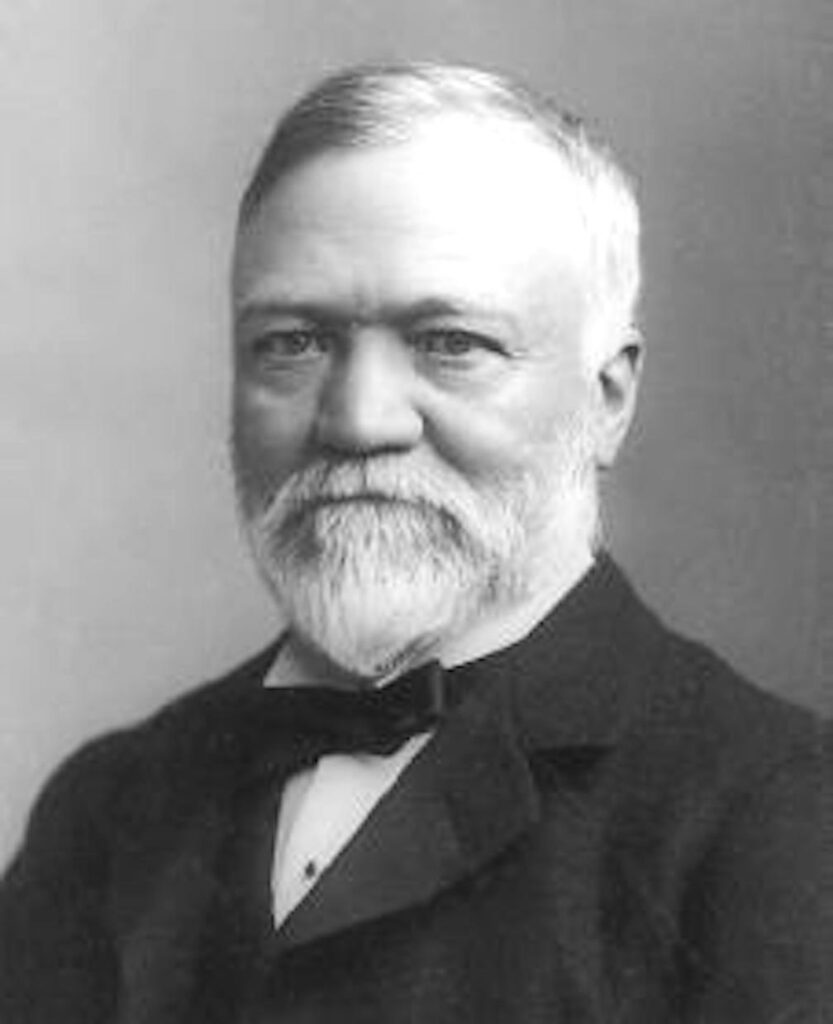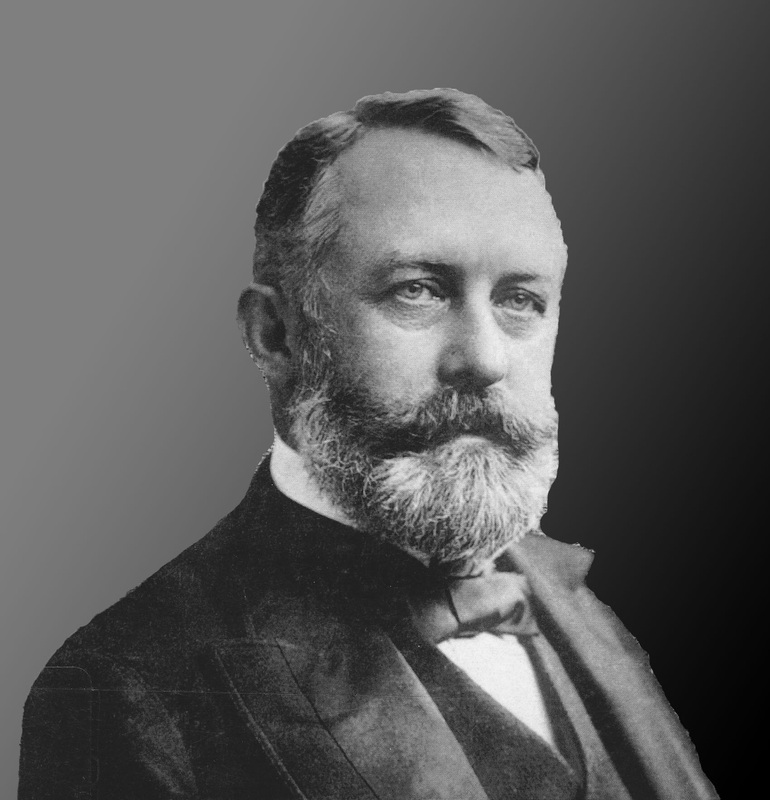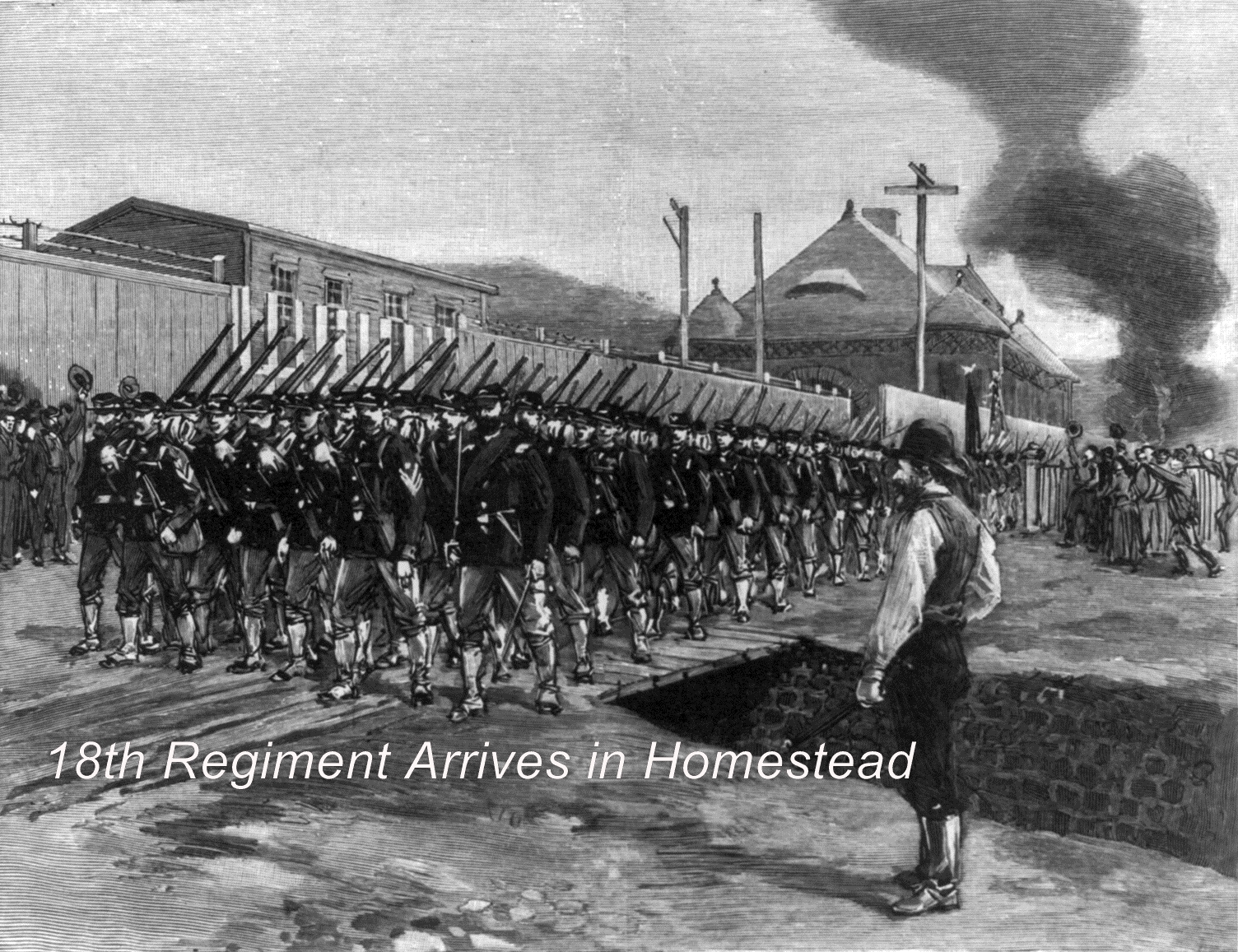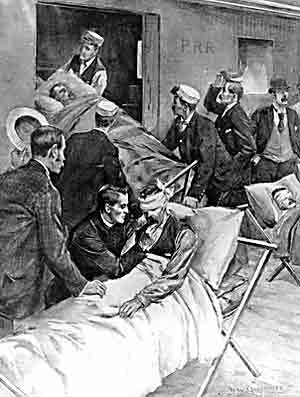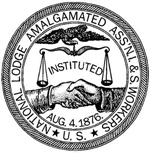The Battle of Homestead Strike – July, 1892
More than 130 years after it occurred, the Homestead Strike of 1892 retains its capacity to shock.
It was a defining event which revealed in the starkest terms the respective strength of labor and management in America in the 1890s. The crushing defeat of the workers meant that there would be no recognized trade unionism and collective bargaining in steel and other heavy industries until the 1930s.
On one side was the Carnegie Steel Corporation, capitalized at $25,000,000 and the world’s largest manufacturing firm at the time. It was also highly profitable, notwithstanding the violent fluctuations of the business cycle characteristic of the American economy in the late 19th century.
Representing labor was the Amalgamated Association of Iron and Steel Workers. Founded in 1876, it was one of the largest unions in the country with a membership of over 20,000 and was a major force in the recently-formed American Federation of Labor.
But while a strong union for its time, the Amalgamated was not without weaknesses. For all its success in gaining a foothold in the rapidly growing and changing steel industry, it had not successfully organized the entire industry. The union had been defeated in 1889 at the all-important J. Edgar Thomson works in Braddock, just across the Monongahela River from Homestead and also owned by Andrew Carnegie.
A second source of weakness was craft divisions, which made for a sharp distinction between skilled and unskilled workers. This also had an ethnic dimension, as many of the unskilled steelworkers at Homestead were newly arrived eastern European immigrants.
Finally, the union’s craft distinctions did not coincide with existing technology, causing considerable friction within the ranks of the skilled workers as disputes arose over which craft had the right to operate which machines.
The Issues
The main issue that triggered the strike was retention of the sliding scale wages system. Adopted by some unions in the late 19th century, the sliding scale pegged wages to the selling price of steel. The company was demanding that the floor of the sliding scale be lowered by approximately 15 per cent.
The underlying issue, however, was union recognition itself, which became clear when the company made its initial offer and refused to negotiate further, saying in effect, “take it or leave it”. Following the union’s rejection of this ultimatum, the mill ceased production on June 28, 1892. Strictly speaking, the Homestead strike began as a lockout.
Henry Clay Frick, the company’s chief executive officer, opposed unions – anywhere and everywhere. Andrew Carnegie’s public utterances had been more equivocal. But research proves decisively that Carnegie , who was out of the country during the strike, fully agreed with Frick and was in continuous communication with him throughout the strike. It is difficult to resist the conclusion that Carnegie’s absence was intentional.
Both sides were organized and ready. Frick constructed a tall fence around the mill with searchlights on the corner towers. It was promptly dubbed Fort Frick. The rest of the borough of Homestead was firmly in the hands of the workers.
John McLuckie, a steelworker and union member was the Homestead Burgess, the equivalent of mayor. A broad-based advisory committee was formed in order to provide leadership and guidance.
Above all, the workers were preparing for the arrival of the dreaded Pinkerton agents, whose services Frick had recently employed in the coke region of Fayette County and who were rumored to be on the way.
The Battle
They did not have to wait long. Early on the morning of July 6 the tugboat, Little Bill, hove into view, towing two barges containing about 300 Pinkertons.
Workers and citizens armed with sticks, rocks, and guns ran to confront them.
We will never know who fired the first shot or exactly how many people on either side were killed in the Battle of Homestead. But for the next several hours, armed combat raged on the landing and at the nearby Pump House that supplied water for the mill operations.
Among the weapons pressed into service was the borough of Wilkinsburg’s G.A.R. cannon, which the workers hauled to the banks of the Monongahela overlooking the Homestead works. Its use was halted after a mis-aimed blast killed a striker, Silas Wain.
Outnumbered, outgunned and trapped on the barges, the Pinkertons surrendered by day’s end and faced a virtual gauntlet during which the entire community of Homestead rained blows upon them. About half of the Pinkertons sustained injuries. Some were serious, but, remarkably, nobody was killed. The Pinkertons were then packed into trains and removed from the scene. This did not sit well with the strikers and townspeople, who wanted them arrested and tried for murder. The Pinkerton barges were set afire and burned spectacularly through the night.
There followed an outpouring of grief and anger as the people of Homestead buried their dead. Rev. J.J. McIlyar of the Fourth Avenue Methodist Episcopal Church called the Pinkertons “a blot on civilization and a disgrace to this country.” Father John J. Bullion of St. Mary’s Roman Catholic Church, preached that workers had a right “to expect permanent employment and hence it is wrong for a mob to come here and deprive the workman of a right that is his.”
Their words and those of other ministers of religion were carried to newspaper readers nationwide by the hundreds of journalists who had descended upon Homestead and whose reporting in the main was sympathetic to the strikers.
Decline of the strikers’ cause
The fate of the strike now turned on whether the Governor of Pennsylvania would send in the National Guard. The strikers and their supporters were hopeful that he would not. Gov. Robert E. Pattison was a Democrat, and he might therefore have no compelling political reasons to come to the aid of Carnegie and Frick, both of whom were staunch Republicans. Memories of the Railroad Strike of 1877 – which cost the Pennsylvania Railroad $28,000,000 in destroyed property in Pittsburgh alone despite the presence of the Guard – were also fresh in the minds of many.
These hopes were misplaced. On July 12 the first troops arrived and, meeting no resistance, took up positions in the town. A few days later, the company began to hire replacement workers and announced plans to build houses for them on mill property.
Attack on Frick
The presence of the National Guard in Homestead could not, however, prevent the arrival on the train to Pittsburgh of Alexander Berkman.
He had come to assassinate Frick. Devoted companion and comrade of Emma Goldman, he was imbued with the spirit of 19th century anarchism and a heavy emphasis on the “propaganda of the deed”– heroic, exemplary action that would be a catalyst for downtrodden workers and peasants.
Nothing could have been further removed in ideological terms from the sturdy trade unionism and labor republicanism of the striking Homestead steelworkers, who had never asked for Berkman’s assistance. Historians have not found any adherents of Berkman’s anarchism among the workers themselves.
In addition to being totally out of touch with the existing consciousness of workers he had taken upon himself to help, Berkman was perhaps the last imaginable to carry out a successful assassination. He had never fired a gun before in his life. The cheap revolver he bought for the task turned out to be defective. Nor did he possess the psychology of a killer. He later wrote that, as he watched the blood flow from Frick’s neck, “for an instant, a strange feeling, as of shame, came over me.”
When he burst into Frick’s office in downtown Pittsburgh on Saturday July 23 and fired at virtually point-blank range, Frick was not seriously wounded and was to recover rapidly. This was not known when he was rushed to his opulent home, Clayton, in Pittsburgh’s East End and put to bed. (He was back at his desk the following Monday.)
Denunciation of Berkman’s deed in the press was universal. But Private W.L. Iams of the National Guard was heard to say, “three cheers for the man who shot Frick!” For this, he was brutally strung up by his thumbs, and drummed out of his unit. It is unlikely that he was completely alone in his views.
The impact of Berkman’s attempted assassination was not in the strikers’ favor. Frick and Carnegie were bringing in replacement workers with impunity, though far from immediate victory. Among other expressions of continued support for the strikers, steelworkers at Duquesne, Pittsburgh and Beaver Falls came out in sympathy (though, significantly, not the J. Edgar Thomson workers in nearby Braddock for reasons noted earlier).
Attempt at settlement
Hugh O’Donnell, who had gained prominence as a leader during the Battle of Homestead and through his eloquence as a member of the advisory committee, went to New York to lobby the head of the Republican National Committee to broker a settlement.
Burgess McLuckie stayed in Homestead and hammered the Republicans with everything in the Democrats’ rhetorical arsenal. Congressional hearings were held. But none of these activities brought the company any closer to the bargaining table, and, most ominously, over l00 union leaders and activists were arrested and indicted for the alleged murder of the Pinkertons.
Although unclear to most contemporaries in August, 1892, it is completely clear in retrospect that there was now no way for the workers to win. Two crucial markers on the road to defeat were the fading support of the immigrant steelworkers, who, being the lowest paid workers to begin with, were essentially starved into submission, and the inescapable fact that enough scabs had been recruited to restart the mill.
By late October many skilled workers had gone back as well. In an agonizing meeting in early November the remaining strikers voted by a narrow majority to end the strike. At about the same time, juries in Pittsburgh acquitted all of the strikers who had been indicted for murder and charges against the rest were dropped. By 1893 most (though not all) of the strikers had been rehired – on the company’s terms.
Consequences
Could the outcome have been different? Historians unanimously say no.
The Amalgamated Association had not been able to organize the entire industry or even all of the Carnegie mills. There were built-in defects to the union’s overarching trade policy, centered as it was on the view that steel could be permanently organized on a craft basis. The workers were deeply divided in their political allegiances and had little influence in either Republican or Democrat councils in gaining support for their industrial battles.
Above the strictly local level, America in the 1890s was anything but committed to sanctioned trade union organization and collective bargaining. The steelworkers were divided along ethnic lines, though as Paul Krause has convincingly shown in The Battle for Homestead, 1880-1892, this was not an important reason for the strike’s failure.
Labor historians are skeptical of the notion that workers and other subaltern groups in society experience oppression, exploitation, defeat, and very little else. Despite losses in the aftermath of Homestead, subsequent generations of steelworkers fashioned viable survival strategies for themselves and their families, engaged in another titanic struggle for union recognition in 1919, and finally prevailed with the coming of the New Deal and the CIO in the 1930s.
But for many years after 1892, Homestead and the other steel towns of America fell far short of anything that could be called political or industrial democracy. The corporation cast its shadow everywhere. Local government could not accomplish anything that the corporation opposed.
Even after the coming of the United Steelworkers of America, Homestead itself was dependent upon US Steel for such basic public services as snow removal and street repairs. For many years, the gap between what the industry could afford to pay and what workers actually received in wages widened to an extent seldom seen at any time in the history of industrial society.
Many students of the Homestead battle see it as a signal event in establishing the predominance of the rights of capital over rights of labor in the workplace. While legal and supra-legal suppression of workers was nothing new, Homestead seemed to draw the lines in this struggle as never before.
For several decades after, corporate violence against workers, especially immigrant workers, in the form of private enforcement agencies like the Pinkertons and the infamous Coal and Iron Police, was acceptable, even when the human rights of workers were clearly violated and public sentiment favored their cause.
Working people in Homestead made history in 1892, but as is so often the case, not under circumstances of their own choosing.
– With thanks to labor historian Dr. Joseph White, professor emeritus University of Pittsburgh, and the Allegheny County Labor Council



